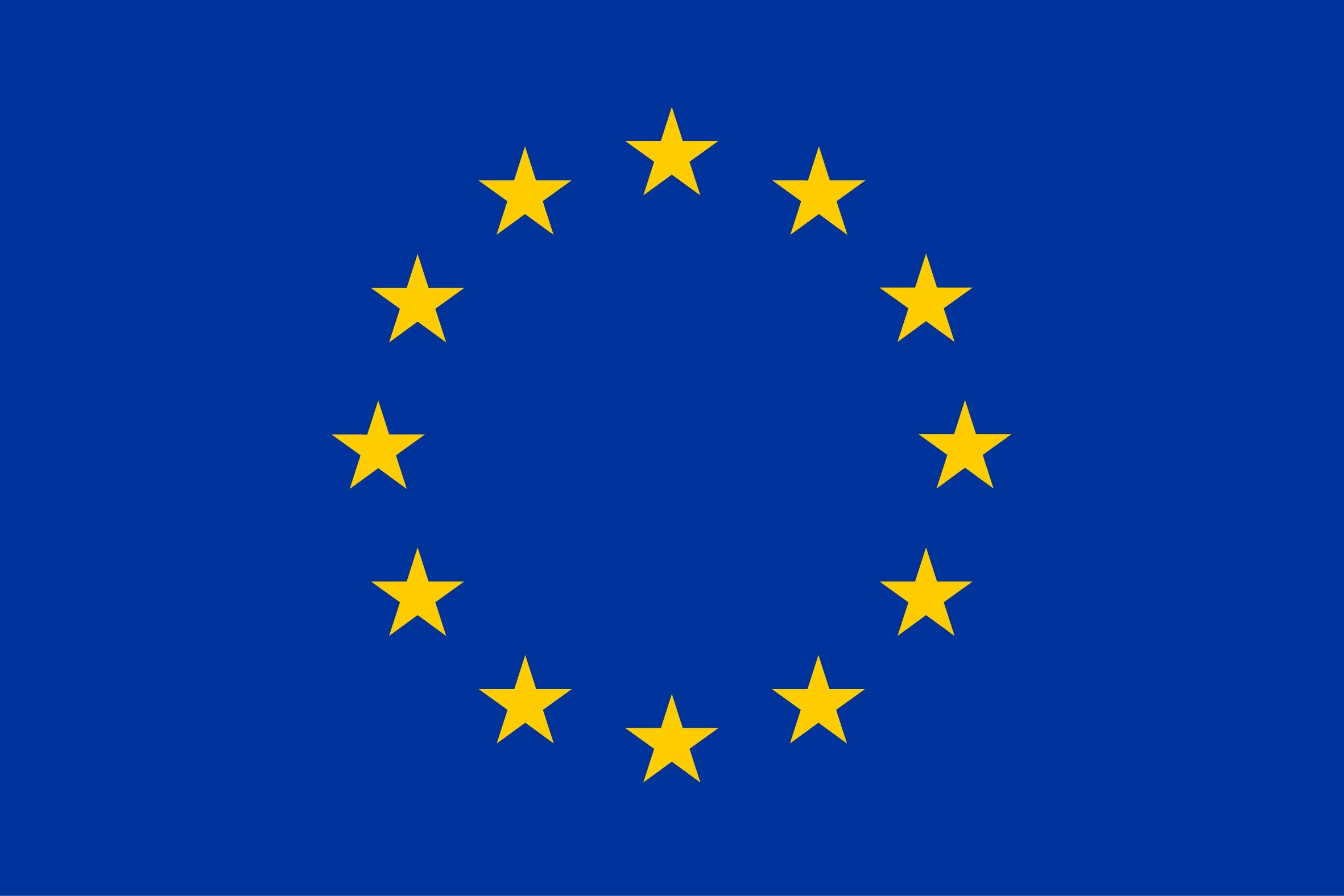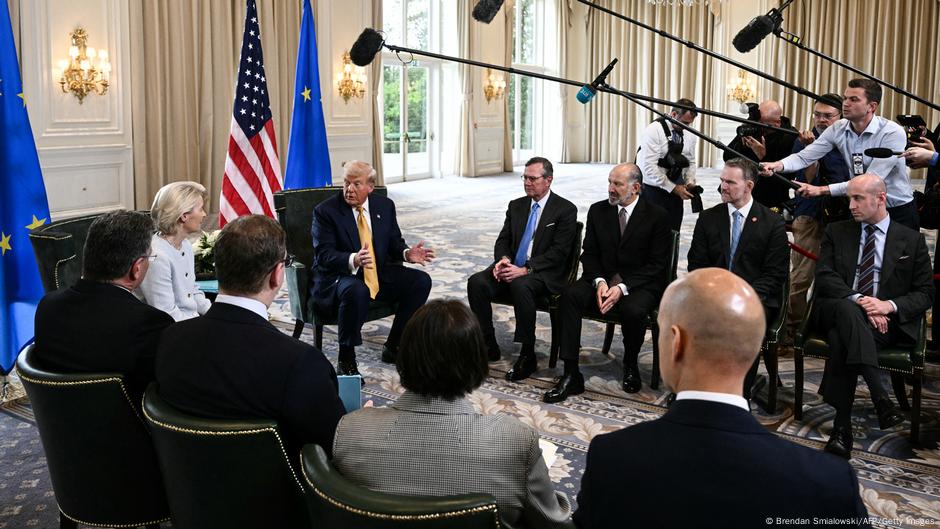What’s in the EU-US trade deal?
“We are agreeing that the tariff straight across, for automobiles and everything else, will be a straight across tariff of 15%,” according to Trump.
Currently, most EU goods face a 10% tariff, with levies of 50% on steel and aluminum. Cars and car parts are now taxed at 25%.
Trump also said the bloc had agreed to purchase “$750 billion (€638 billion) worth of energy” from his country, as well as $600 billion more in additional investments.
The president told reporters at the start of the meeting that fairness was the main remaining sticking point.
“Europe is very closed. We don’t sell cars into Europe. We don’t sell essentially agriculture of any great degree,” he said, adding that pharmaceuticals “won’t be part of” any agreement.



Bye, EU economy!
Initially, import tariffs will primarily hit Americans, but even a “low” 15% tax may just give local producers an edge over European producers, resulting in Europe losing economic ground from the Americans in the long run. American companies will then grow more economically while European ones will see a limit to their growth.
This deal further frees the Americans to grow economically in Europe and compete away from our own companies: they will have to pay 0% in tariffs, while other European barriers (such as taxes on tech companies) will also be removed with this deal.
The combination of U.S. tariffs versus an almost completely free market for U.S. companies in Europe will skew trade and production relations between the two economic blocs. While this may not affect certain obscure or hyper-specialised sectors immediately, much of Europe’s agricultural, industrial and tertiary sectors will suffer greatly. Especially if the Americans manage to demolish our brand protections as well, thousands of farmers in the Netherlands and France, among others, may well close their doors, along with the European tech sectors, and perhaps even the German car industry if Trump decides to subsidise the American car sector.
On top of that, details are already coming out about what America will get on top of that: deregulation of the tech sector for US companies, 600 billion to only US arms producers instead of European ones, taking over the cost of arms supplies to Ukraine… if this deal really goes through then we will go off the deep end. It is to be hoped that the few countries with reasonably straight backs (France and Spain, among others) stop this deal.
Don’t be overly dramatic. The impact is estimated to be 0.5% GDP. This is a bad deal for EU for many reasons but it’s definitely not economy ending. EU will try to struck deals with other partners now and diversify.
The scary part is more how weak EU is now. It missed how dangerous Putin was to its security and it missed how dangerous depending on US for security was. China understood this but EU wasn’t able to react. It’s internally divided and unable to come up with clear plan on how to defend itself. I guess I’m being dramatic now but Russia sees all this and definitely will try to use this opportunity.
0.5% GDP in what period? Because if it is yearly, it’s a lot. Any source?
For example: https://www.bruegel.org/analysis/economic-impact-trumps-tariffs-europe-initial-assessment
It’s older analysis for multiple scenarios including no deal scenario:
“An overall GDP drop of about 0.3 percentage points is significant but unlikely to push the EU economy into a recession as the EU was expected to grow by 1.5 percent in 2025 before the tariffs. It should be noted that these models do not account for all effects, such as the risks posed by a financial crisis in the US.”